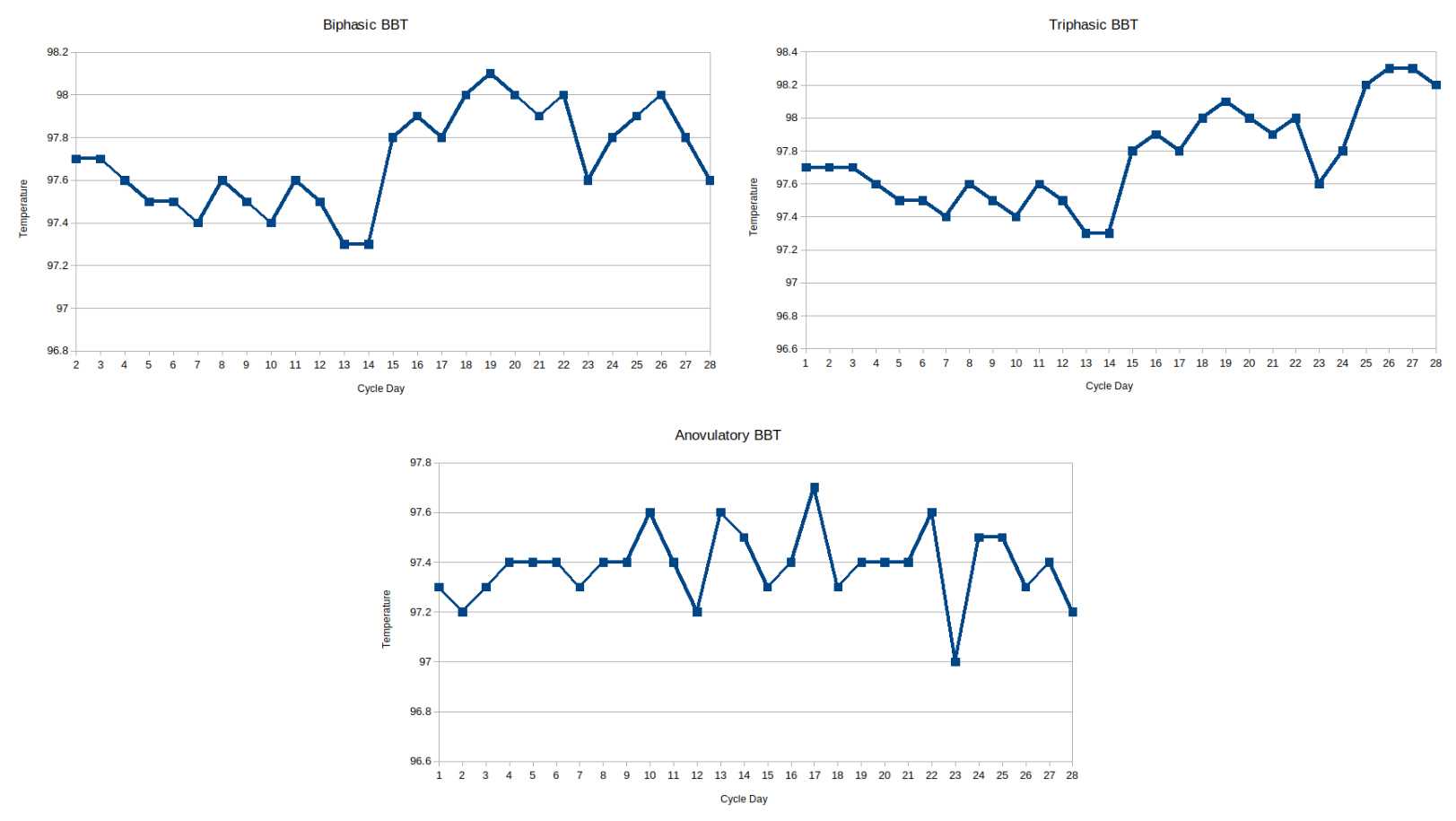Spotlight: Basal Body Temperature
Taking your basal body temperature every morning can be a very reliable method for tracking ovulation.
Basal Body Temperature
Reliability: High
When to monitor:
- From the end of menstruation until ovulation is indicated
- Through entire cycle for the first three months or if you plan to use it as a pregnancy/menstruation indicator.
Your basal body temperature (BBT) is your lowest body temperature of the day. Taking your BBT is one of the most studied and reliable methods for predicting your cycle and your fertile days. It is a useful monitoring method because in most people the spike in progesterone released when the egg is released causes a spike in temperature until progesterone levels drop.
How to do it:
Immediately upon waking, take your temperature using a thermometer that is accurate to at least 1/10th of a degree. There are many different thermometers available. A regular oral thermometer is all that is required, but you may want a more accurate thermometer. BBT specific thermometers are accurate to 1/100th of a degree. Some oral thermometers connect to your phone through a wire or bluetooth. There are also vaginal thermometers that you can wear overnight that will record your temperatures throughout your sleep cycle and use the lowest one. One of the more high tech thermometers may be better if you smoke, are a mouth breather, or have sleep apnea.
Record your BBT on a graph each day. You can use graph paper or an app.
How to interpret it:
Ovulation is indicated when you have at least a 0.2F temperature rise that is sustained for at least three days. Your egg is released the day before the temperature rise. Your BBT will usually drop back down just before or at the start of menstruation. A sustained temperature rise for 18 days indicates pregnancy. The important thing to remember is that one temperature means nothing without the context of the temperatures around it. One high temperature does not mean you ovulated and one drop in temperature does not mean you are not pregnant. See the forest, not the trees.
If there is not sustained rise in temperature, you may be having an anovulatory cycle or something may be delaying ovulation. Endocrine testing has shown that more than 20% of monophasic cycles are ovulatory,though.
After three months of regular cycles, you should have a good idea of which cycle days are fertile. If you’re trying to get pregnant, you should have ejaculatory sex at least the three days before ovulation, but you may be fertile up to 5 days before ovulation.
Examples:
A biphasic chart indicates ovulation. A triphasic chart also shows ovulation. The charts below show ovulation on cycle day 14. Both a biphasic and triphasic chart can be present when pregnant or when not pregnant, so don’t assume pregnancy from a triphasic chart. A chart with no clear temperature shift indicates there MIGHT have been no ovulation.

Examples of single cycle BBT charts.
Notes:
For best results, you should wake up at the same time each day after at least 3-5 hours of sleep.
Take your temperature before eating or drinking.
If you’re a mouth breather, wait a few minutes with your mouth closed without moving before taking your temperature.
Using an app like Fertility Friend or Ovia is usually easier than trying to calculate your ovulation day yourself.
If you are using a digital thermometer and start getting wacky readings, change the batteries.

Twitter
Facebook
Reddit
Pinterest
Email